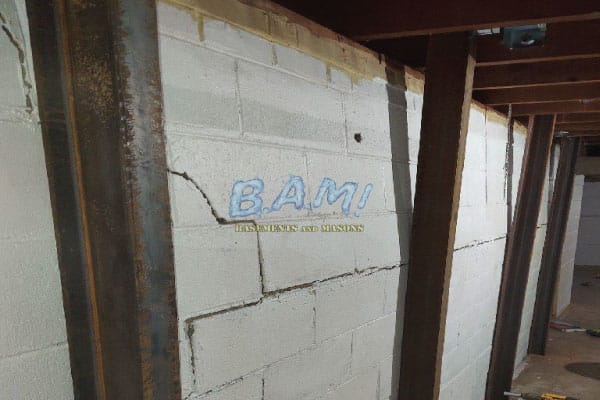Best Basement Waterproofing Fundamentals Explained
Best Basement Waterproofing Fundamentals Explained
Blog Article
Best Basement Waterproofing for Dummies
Table of ContentsThe Single Strategy To Use For Best Basement WaterproofingExamine This Report on Best Basement WaterproofingThe 8-Second Trick For Best Basement WaterproofingUnknown Facts About Best Basement WaterproofingThe Single Strategy To Use For Best Basement Waterproofing
uses excavation methods towards all-time low of the framework's foundation. entails getting rid of wetness after it has actually gone into the basement. AdvantaClean's skilled specialists and professionals will find the water resource. If wall or slab cracks exist, we will inject polyurethane and epoxies into the cracks and secure the concession, stopping additional moisture from getting in.Mounting cellar air flow systems, conditioning systems, or cellar dehumidifier systems to get water out of your basement. Selecting AdvantaClean's basement waterproofing solutions is a reliable means to deal with wetness and prevent mold and mildew from compromising the framework of your home and the health of your family members.
If there's condensation outside of the foil, you have high moisture in your cellar. Fix it with a mobile area dehumidifier or a whole-house humidifier system instead of waterproofing items. If the aluminum foil has condensation on the inside surface (beside the wall), the dirt around your house might be normally damp from a high water table or inadequate soil water drainage.
You can waterproof just your indoor walls, which may fix the issue. Once they dry out, they stick completely to concrete and stonework wall surfaces.
7 Simple Techniques For Best Basement Waterproofing
Concrete water resistant finishes can not be applied to formerly painted surface areas; inspect the label. Recognized as densifiers, they are ideal only for wall surfaces that haven't been repainted or secured.
You clean, roll, or spray it on much more thickly one gallon covers simply 75 square feet, not the 300 square feet regular with conventional paint. Waterproof paint is fine for do it yourself application. You can apply it over painted surfaces, and paint over it once it's cured (one gallon expenses $37).
It can cost $10,000 to $15,000, relying on the work needed. Outside waterproofing involves excavating throughout your home fully depth of the structure wall surfaces, then setting up a water-proof layer or membrane topped by drainage panels. The panels supply a very easy path for water to stream to an outside French drainpipe at the bottom of your foundation.
The Best Strategy To Use For Best Basement Waterproofing
A cellar without waterproofing is kind of like that. Your basement doesn't desire to go with a downpour without proper security just as much as you don't desire to.
Exterior waterproofing is a waterproofing method that entails securing your home from the exterior. It's sort of like a moat around a castle. It entails excavating a trench around your whole house to the foundation (about 8 to 10 feet down). The structure wall surfaces are after that cleaned, sealed, and covered with a water-proof membrane visit the site layer or sealer.

What Does Best Basement Waterproofing Do?
It's an extra engaged procedure i was reading this that needs excavating up your lawn, which is costly and lengthy. Exterior waterproofing entails eliminating whatever bordering your home, including verandas, driveways, walkways, landscape design, air conditioning devices, decks, and so on. If any one of the work was done inaccurately and water is still entering your basement, there isn't much you can do to correct or repair it.
Inside basement waterproofing entails waterproofing from the within. Any water that leakages into your basement is rerouted before it touches your flooring. It's kind of like using a raincoat under your garments. It involves 2 things: a water drain track and a sump pump. It functions by securing the within your basement wall surfaces and floorings so water that attempts to go into is channeled out via a sump pump.
It's an effective method to waterproof your basement. The drawback of indoor basement waterproofing primarily has to do with the installation process.
The Single Strategy To Use For Best Basement Waterproofing
In verdict, exterior and interior cellar waterproofing are both efficient approaches of securing your home from water damages. Outside sites waterproofing creates a barrier that prevents water from entering your home, while indoor waterproofing redirects water that does enter your home. And it's essential to keep in mind that exterior waterproofing is an expensive and turbulent installment procedure when compared to interior waterproofing.
Whichever approach you pick, see to it you choose a dependable and credible professional for the task. Both approaches require skilled employees to take care of the task. If you have any kind of concerns regarding basement waterproofing, please reach out to us. And if you're in our service location and have water in your basement, contact us for a cost-free, no-obligation home inspection.
You can submit our kind here. Best Basement Waterproofing, start a chat in the bottom right-hand corner, or call us at 1-800-827-0702
Report this page